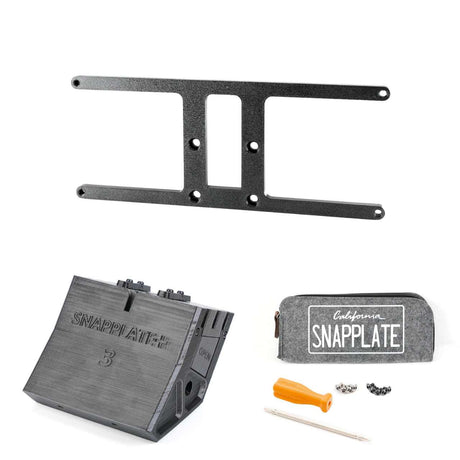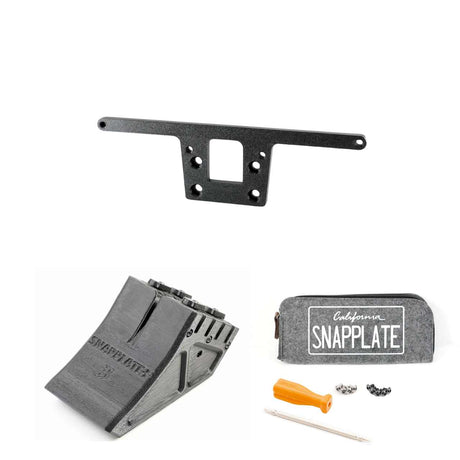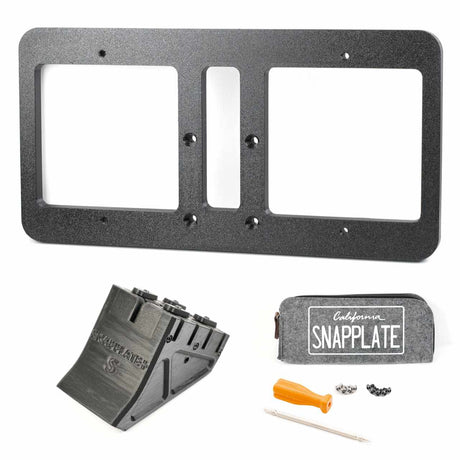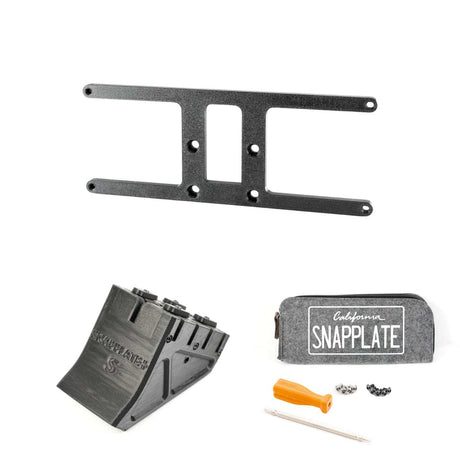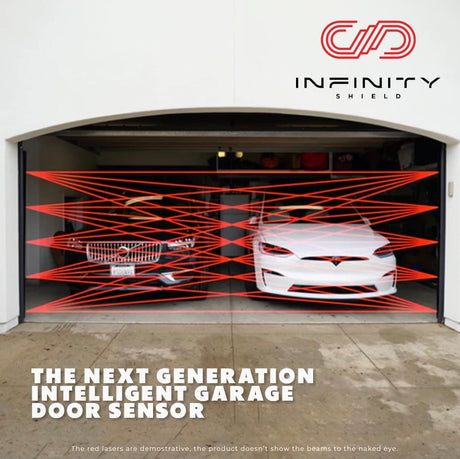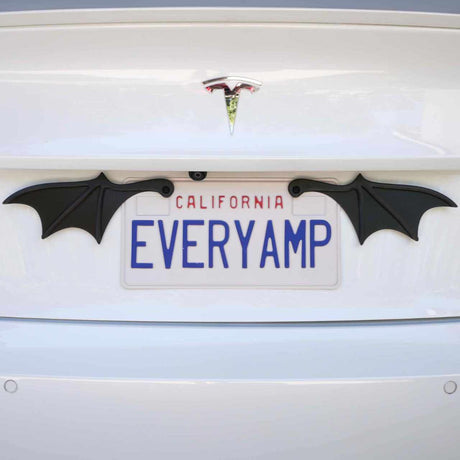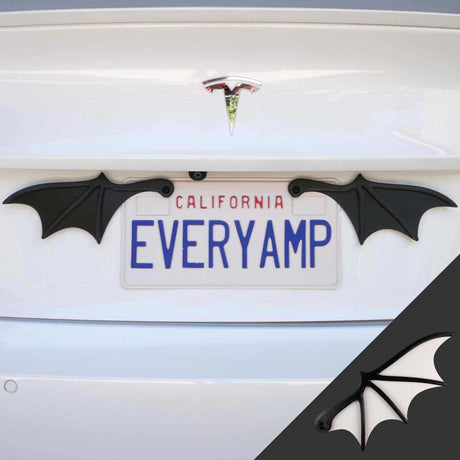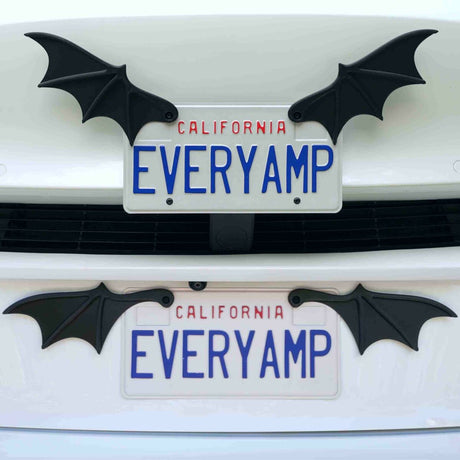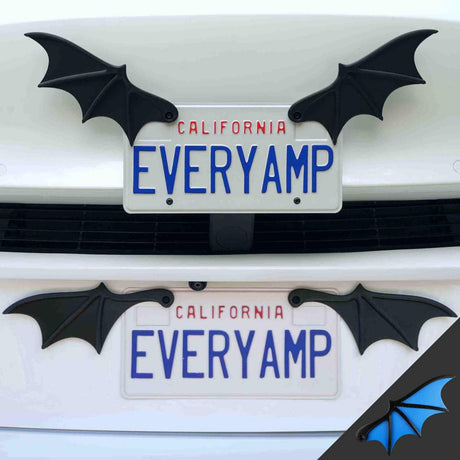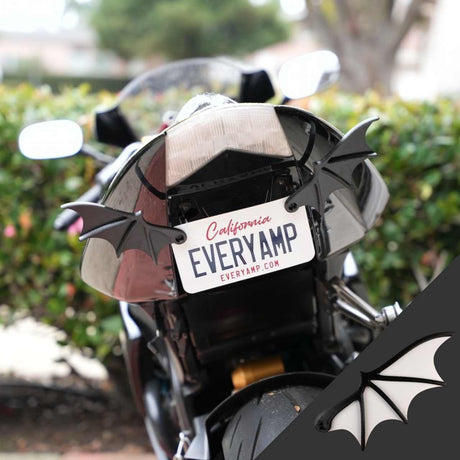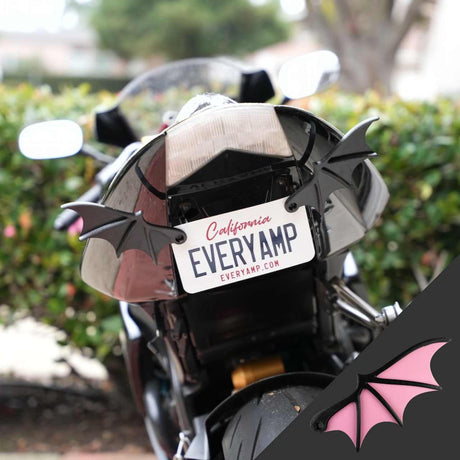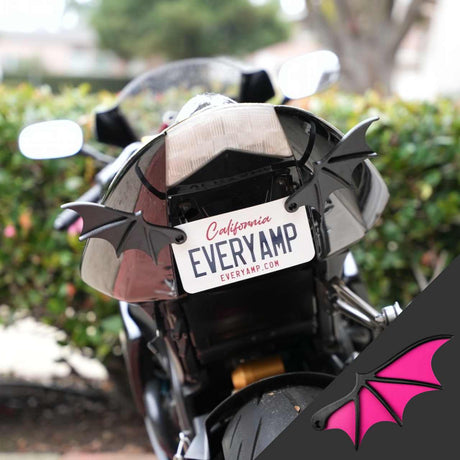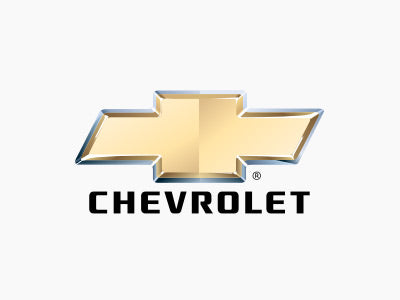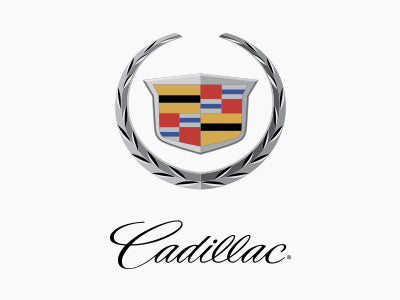Why would we want this?
Before we got a Model 3, we drove a Lexus ES350. It was smooth, quiet, and a great travel car. Now don't get me wrong, the Model 3 is superior in many, many ways, but it definitely leans more on the sporty side both in smoothness and noise and we'd like to get some of that luxury back.

Since the luxury car makers have (still!) not made an electric vehicle that checks as many boxes for us as Tesla, they're simply not an option. The newer "Raven" Tesla Model S with the fully-adjustable suspension is a step in that direction, but it's simply out of our budget, so that started our quest for an aftermarket luxury suspension for the Model 3.
There was a problem though. That product category didn't exist.
Specifically, I wanted three things:
Gather the needed tools
- Stock ride height - which I know a lot of people want to lower their cars for looks, but that's the opposite of what you want for maximum ride quality. You can certainly lower the car and improve the ride at the same time, but a lowered car will never be able to ride as soft as a higher car could.
- Adjustable damping - so I'll have the best chance to tune in the ride quality I want.
- Softer springs - which the Redwood kit actually has spring rates very close to factory, but the higher quality springs and way smaller bump stops make for an overall softer effective spring rate.
We could find performance suspensions for days, but nobody was making aftermarket luxury suspensions for any cars, much less Teslas. We contacted most of the big names and asked if they would be willing to fill this, admittedly, niche market, but they all declined. We did find one suspension shop who was willing to modify the stock suspension just for us, but that turned into an expensive and, ultimately, disappointing experience.
Mountain Pass did eventually come out with their comfort non-adjustable and now comfort adjustable kits and I've heard good things about them, but they're both designed to drop the ride height by an inch and can't get to stock height without an additional 1.75" lift kit, so that still wasn't quite what I wanted.
Enter Redwood Motorsports. At their shop right by the Tesla factory in Fremont, they took notice of the truckloads of Teslas coming by and saw opportunity. They already had an established relationship with two of the biggest names in suspensions - Ohlins and Swift, so they developed a Performance suspension for the Model 3. As soon as I saw this new player enter the market, I contacted them with my dream of a luxury suspension using top-shelf components and they said great, let's do it, and got to work on re-tuning their Performance kit to make the Grand Touring kit.
If you're interested in a Grand Touring suspension kit for yourself, use our coupon code "LivingTesla" for a discount!
Installation Tips
I'll just start by saying this installation was a bigger job that took a lot longer than expected. So, TIP #1 is strongly consider paying a competent suspension shop to do it! However, if you're committed to the task and up for the education, time, and needed equipment, here's what I wish I knew when I started to make it easier and faster.
TIP #2 - Gather the needed tools
- Spring compressor (paid link) - As recommended to me by Redwood. It was much better than what I've rented from auto stores in the past
- Safe Jack jack stand - Teslas only have 4 jack points and you're going to need to move your floor jack around to compress the suspension. Two would be helpful, but you can do it with one. Use coupon code "LivingTesla" for a discount at Teslarati
- Low Profile Floor Jack (paid link) - The top bar on the Safe Jack is 55mm and you only have about 125mm of clearance from the ground to the battery on the Model 3, so go for a jack with a minimum 2.75" (70mm) height, lower is better. 1.5 tons can do the job, but 2 tons would be better
- Extendable lug wrench/breaker bar (paid link) - some of the fasteners are very tight and this is perfect to keep in your car anyway
- Torque wrench (paid link) - this one comes with an extension you'll need as well
- 13mm nut driver (paid link) - Redwood's instructions have you remove the entire upper control arm assembly, but you can avoid that with a thin-walled socket or nut driver
- Torx sockets (paid link) - must have for the sway bar
- Metric tape measure (paid link) - not absolutely needed for measuring ride height and damper length, but it's nice to not have to convert
- Metal ruler (paid link) - again, you can make do, but they're nice to have when you need good measurements
- A friend - I don't have a link for this one, but you're going to need a third hand and some extra body weight in some parts
Here are Redwood's installation instructions. They're really written for a shop with a lift, so you're going to need to improvise a bit. I'm going to keep the same step names as they do and give some tips along the way.
TIP #3 - Before you start taking the car apart, make sure you have everything in your suspension kit. Go to STEPS 5 and 6 and at least loosely assemble everything.
STEP 1
TIP #4 - Whether it's factory or lowered, you're going to need to know your desired ride height in mm, so do that before you do anything else. With the car on level ground, measure from the center of the wheel straight up to the fender. We were at about 406mm in the front and 393mm in the rear for comparison.
Remove the front trunk and associated plastic covers following their instructions.
FRONT INSTALLATION
STEP 2
Time to lift the car and remove the stock suspension, but we're only doing one corner at a time so this is where the improv starts.
Pick a front corner, remove the wheel cover or lug nut covers if you have them, and TIP #5 - break those lug nuts loose before you lift it.
Position the top of your Safe Jack in the lift point and slide the floor jack under it. TIP #6 - if your car is too low, you can lift it some without the Safe Jack and you'll have a little extra clearance for a short time after. Lift the corner, put the legs on the Safe Jack, and pull the wheel off.
TIP #7 - Use the breaker bar to loosen the nut on the sway bar. You're going to need a torx socket and adjustable wrench to get it the rest of the way off and you may need to move the jack over to the lower control arm and lift it a bit to take the stress off the bolt. Remove the jack after the linkage is free.
TIP #8 - Remove the three top nuts next using the 13mm nut driver. It should barely fit in the holes and line up with the nuts, but if it doesn't, you may need to loosen the four bolts on what Redwood calls the FUCA carrier in their instructions. You don't have to remove the whole thing like they did, but you may need to realign it so the 13mm nuts line up with the holes and then tighten the four bolts. Trust me, I've done it their way and this way and their way is more work.
Use the breaker bar and an adjustable wrench to loosen the bottom bolt on the damper. TIP #9 - The rubber bushings want to hold the control arms up, so you're going to need some extra body weight on the brake caliper to release the tension on the bolt and help remove it. Hold the damper in one hand, remove the bolt with the other, get the bottom of the damper over the lower control arm, and slide it out.
TIP #10 - Disregard the rest of Redwood's step 2.
STEP 3
Follow Redwood's instructions to remove the stock top hat and TIP #11 - do not kill yourself. These springs are way strong. You'll need to use the breaker bar eventually. Lay the spring flat on the ground with both ends pointing at things you don't mind destroying.
STEP 4
We're not ready for the rears yet, so skip to 5.
STEP 5
Assemble the front coilovers per Redwood's instructions with a few enhancements:
TIP #12 - When you're setting the preload, you first need to assemble the coilover with the spring just snug on the perches and we couldn't do that with the free length set to 630mm. Go ahead and loosen up the lower mount and move it down a good 40 mm.
TIP #13 - Measure the uncompressed spring length and subtract the preload amount given in their table, which is not currently in the instructions for the Grand Touring kit. Here's what they gave me:
| Front Preload (mm) | Rear Preload (mm) | Ride Height (mm) |
| 92 | 68 | 410 |
| 84 | 61 | 400 |
| 77 | 54 | 390 |
| 69 | 47 | 380 |
| 62 | 40 | 370 |
| 54 | 33 | 360 |
So take your uncompressed length, subtract your chosen preload value from it, and that's where you want to set the lower spring perch. We started at 92mm in the front, but the front was way too high. After multiple iterations, we ended up at 64mm on the front left and 56mm on the front right to get to 406mm ride height. TIP #14 - the suspension will settle 4-5mm from what you initially measure, so keep that in mind.
TIP #15 - When you're ready to compress the spring, placement of the compressor arms is critical. You need 5 coils and to make sure it's not going to get pinched at the top against the top hat or bottom of the spring against the last coil. You'll likely need to leave one part of the compressor loose, get everything lined up, then put the last screw in it.
TIP #16 - When you're ready to decompress the spring, make sure it's centered up at the top and bottom so it doesn't scrape either the top hat or spring perch and don't forget to tighten the lock ring.
TIP #17 - Once the spring is preloaded, now set the free length to 630mm using their instructions.
TIP #18 - Make sure the QR code on the top hat is opposite the tab for the sway bar and is in line with the mounting holes on the bottom and tighten up the bottom lock ring.
Since this is a little difficult to put into words, here's a video to summarize.
STEP 6
Again, we're not ready for the rears yet. Skip to, uh, the second step 6.
STEP 6 (again)
TIP #19 - Have your friend stand on the front brake caliper while you slide the coilover back in. Make sure the sway bar tab is on the correct side, line up the top threads with the holes, and slide the bottom bolt in with your other hand. If it's not quite lining up, you may need to release the bottom mount lock ring, align it, and tighten. Release the caliper and everything will stay in place.
Put the top nuts on first.
Roll the jack over and put enough pressure on the lower control arm to align the sway bar bolt and tighten it up to 75 lb-ft.
TIP #20 - With the jack still on the lower control arm, lift it until you almost lift the car off the Safe Jack, then tighten the bottom bolt to 85 lb-ft. This is critical to make sure that lower bushing doesn't act as a spring and wear prematurely.
Move the jack to the Safe Jack, put the tire and lug nuts on, lower the car, and torque the lug nuts to 129 lb-ft.
Repeat for the other front corner.
Rear Installation
STEP 4
Now for the rears. As before, TIP #21 is loosen the lug nuts before you lift.
Otherwise, follow Redwood's instructions as written.
STEP 6
For rear preload, we started at 56mm in the rear, but it was too low. Use the table above to take your best shot at it. We ended up at 62mm in the rear to get to 396mm ride height. TIP #22 - Again, the suspension will settle 4-5mm from what you initially measure, so keep that in mind.
Here's another video to help visualize the rear adjustment.
STEP 6 (again)
To install the rear springs, you're going to need that third hand and maybe a foot. Make sure the pieces are stacked as shown in the instructions, push the lower control arm down, slide the upper and lower springs into place as best you can, TIP #23 - make double sure the little nubs on the lower rubber isolator are in their holes, have one person try to hold the springs in place while the other moves the jack under the control arm and applies just lifts it just enough to get everything in place.
Install the rear damper and torque the top bolts to 30 lb-ft (41 Nm).
Install lift the lower control arm into place and install the bottom bolts.
TIP #24 - Lift the lower control arm until the car almost lifts off the Safe Jack and torque the bottom bolts to 85 lb-ft.
Put everything back together. Don't forget the plastic cover on the lower control arm.
Reinstall the wheel, lower the car, torque the lug nuts to 129 lb-ft.
Repeat for the other side.
Ride Height Adjustments
Once everything is on, go for a short drive to make sure everything is right and let it settle a bit.
With the car back on level ground, measure the ride height at each corner. Use the table to guess how much each corner needs to adjust and do it all over again until you get it close! TIP #25 - We saw a 4mm drop in ride height after things settled, so keep that in mind.
Review
Ride Quality
The first thing I noticed immediately was the change in steering wheel vibrations. It's not like it turns a rough road into glass, but more like it takes the edge off of the bumps and that was even with the damper adjustments about 2/3 of the way from firm at 24 out of 32 clicks from firm.
I spent the first week driving around my usual roads and kept making small adjustments softer and softer. Even two clicks is a noticeable change and I really thought at some point it would be too soft and just turn into a mess, but it really hasn't. I have it at the softest settings now and I'm really liking it, especially on the highway. It's maybe not quite Lexus smooth, but it's a noticeable change for sure and it handles way better at the same time.
Even at the softest settings, when I go over speed bumps, I don't feel any excessive bouncing. The car moves up, down, back up, and that's it. No underdamped oscillations at all.
Handling
I really expected that handling would be a big tradeoff, but in some ways it's even better than stock. I have several long sweeping curves on my way to work and I always felt like the factory suspension would lean over, but then oddly lean back a little bit, which I'm guessing was hitting the bump stops. With the Redwood, it's just a smooth stable lean through the curve.
On the softest damping settings, it does lean over quickly when you turn, so you're not going to win any slalom competitions, but with a few turns of those adjuster knobs, it'll likely handle better than stock ever did.
Road Noise
One of my goals with this suspension was to reduce road noise and it did help some, but honestly not as much as I hoped.
If you've watched any of our sound testing videos, you know that an app on your phone or even a sound level meter with a single reading isn't going to cut it. That only gives you one measurement at the loudest frequency and it doesn't tell you nearly enough of the story.
Instead, I'm using a sound recorder to record audio that I can analyze later to make frequency response graphs. That also lets me play the sound clips back to back for a second opinion. That way, if we can see a difference in the graphs and hear a difference in the clips, we can be pretty confident there is actually a difference.
So here's a graph of the OE vs the Redwood at 50mph on a rough road.

You can see in both cases it's far louder at lower frequencies, which a sound level meter or app might focus on, but since our ears are less sensitive at those frequencies, I'm not so concerned about that.
I'm more interested in the 1000 to 5000 Hz range where our hearing is most sensitive and where road noise gets most annoying. The red is definitely a bit below the blue, but it's hard to really tell how much, so I'll subtract one from the other and zoom into it.

In this graph, the factory plot is subtracted from the Redwood plot, so anything below zero means the Redwood is quieter. I also added a darker blue average trendline to make it a little easier to follow the trend.
Overall, I'd say the graph is less than zero, especially in that critical 1000 to 5000 Hz band. I'd call it about 2 dB lower on average.
So here's what they sound like, starting with the Tesla suspension.
Now the Redwood.
Using a good pair of headphones, I can definitely hear a difference. I was hoping for more like 4-5 dB, but I've seen less than this from substantial sound deadening, so at least there's measurable improvement.
Criticisms
Of course, nothing is perfect, and one downside I've had with this is it's a little bit noisier over big bumps. Like with speed bumps, I can hear a little bit of the springs squeaking against the rubber pads where the OE was nearly silent. It seems to be a common thing with coilover suspensions and even factory suspensions, but just something to note.
Another thing is price. This is the most expensive option currently available for the Model 3. Ohlins and Swift are great stuff, but they're pricey. The Mountain Pass kit plus their lift kit gets it pretty close in price, so it's just kind of par for the course with this stuff. Redwood did give us discount code "LivingTesla" to share with you guys to help out a bit.
Last, since I have it adjusted as soft as possible and I'm not seeing any significant handling issues, I think there may have been room to get even softer. I feel like Redwood leaned on the side of making it as soft as they could while maintaining good handling and I'd personally sacrifice handling even more, but I'm probably in the minority there.
So that's it, overall I'm very pleased with the kit and I'll likely do the same on our Model Y when that kit is available. I hope this has been helpful with what is definitely an expensive decision!
















